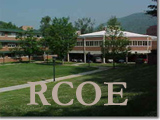Artifact # 11
This project is a result of group research on English as a Second Language (ESL) students and how we as teachers can best serve them.
Context
The ESL Inquiry Project was created at Appalachian State University in the fall semester of 2002. Brett Dabb, Morgan Vassey, Regina Van Leuvan, and I researched ESL students and their needs on the internet. Our main focuses were mainstreaming and modifications in the classroom and in the school. From our findings, we created activities and lessons to be used in classrooms with ESL students. We also created a packet of information and resources to be distributed to our peers to assist them in their classrooms with ESL students. We communicated our findings to our peers in a presentation that began with me telling the class a story in Spanish. I then asked the class questions based upon the story I had told them in Spanish. This activity was designed to help these pre-service teachers understand what it may feel like to not understand what is going on in the classroom. I asked them to think about how they had felt and pay particular attention to some of the behaviors that began to erupt in the class as their fellow students became more lost. This activity was followed with a scavenger hunt which employed picture clues rather than written clues. For the last activity students were paired up and each pair was given an ingredient for a salsa recipe. The students had to decide what needed to be done with these ingredients and communicate this to their classmates in order to make the salsa. These two activities demonstrate how instructions can be modified or relayed to students in different ways so that they can understand and enjoy success. The final part of our presentation was the introduction of the information and resource packet and a question and answer session.
Impact
The ESL population is growing rapidly in North Carolina and throughout the United States. As a teacher, I am sure to have an ESL student in my class during some point in my career. In doing the research for this project we were able to find out just what ESL is and how it is handled in the public school system. We learned what we can do to facilitate learning for ESL students in our classrooms. We were able to prepare a packet of information and resources for use in our classrooms and by our colleagues in their own classrooms. This packet contains general information about what ESL is, lessons, activities and statistics, along with a list of helpful websites and an organization which can be helpful to non-English speakers, parents, and teachers.
Alignment
This artifact aligns to technology competency V D because technology
was used to research ESL and find means of assisting ESL students in the
integrated classroom. This artifact also lists further technology resources
to assist teachers of ESL students. This artifact meets technology competency
VI B because it provides activities and resources to empower students with
little proficiency in the English language. These activities and the other
resources provided can help ESL students have a better chance at success
in an integrated elementary school classroom. This project also encourages
teachers to understand how ESL students learn and to employ methods, which
will create better opportunities for ESL students to succeed (INTASC Principle
3). This inquiry project demonstrates that I reflect upon how my actions
and teaching choices affects others and what I can do to create a classroom
which is friendly and accessible to all students. By taking the initiative
to learn about ESL students and how I can better serve them, I have demonstrated
that I am actively seeking out opportunities to grow within my profession
(INTASC Principle 9). This project encourages teachers to form productive
relationships with colleagues, parents, and agencies in the larger community
to support students' learning and well being (INTASC Principle 10). Teachers
can collaborate with colleagues to develop lessons that will be more beneficial
to diverse learners. Teachers can also use agencies within the community,
which provide translators to communicate with non-English speaking parents,
in order to form a partnership to meet the needs of students.
